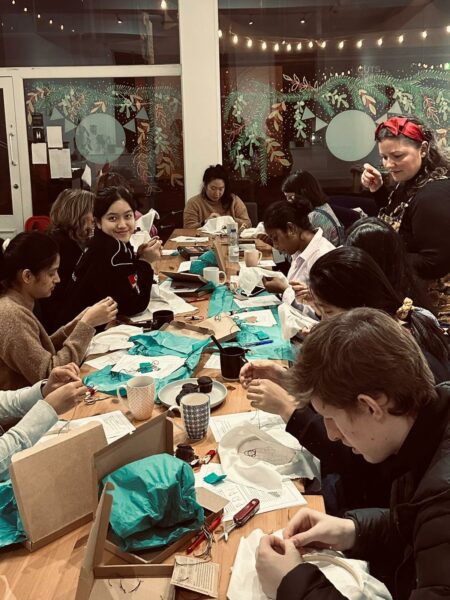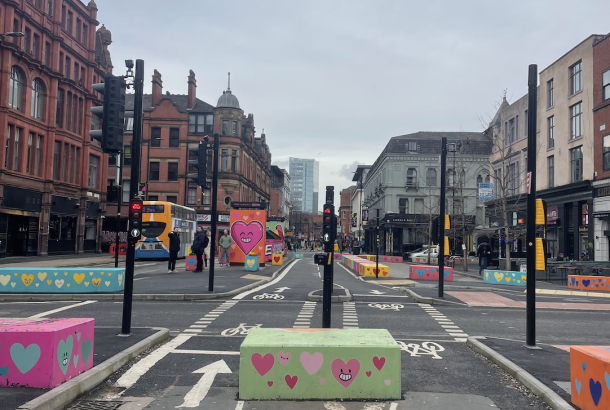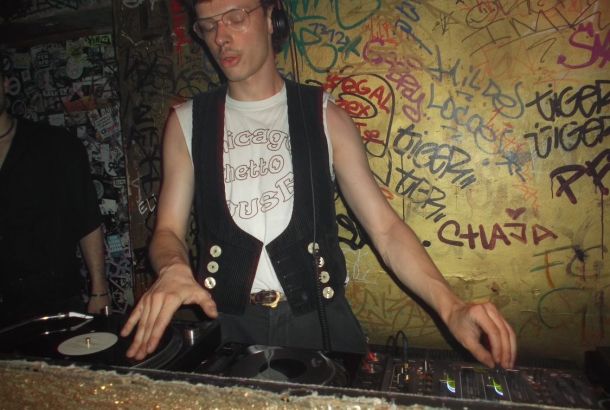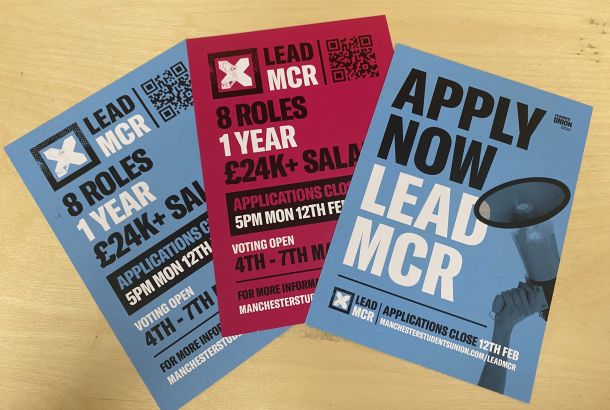Thread Therapy: In conversation with UoM’s Fashion Society and embroidery artist Stephanie Evans

Stephanie Evans and an introduction to Thread Journalling
After giving birth to her daughter prematurely in 2017, Stephanie Evans soon started experiencing postpartum intrusive thoughts. “I was absolutely convinced something awful was going to happen. Like my husband was going to die in a car crash.” She made the decision to leave her successful, but highly stressful, recruitment business behind, and re-focus her mind on something more positive. In 2020, Stephanie began hosting her Thread Journalling classes, an extension of her other business, Evans Sent.
“Thread journaling is the art of using thread to journal by representing your everyday experiences or ‘glimmers’ as miniature stitches.” Glimmers are the opposite of triggers – “they are moments throughout the day where you recognise something lovely is happening.” Noticing, and then recording these glimmers is a way of “retraining the brain” and “breaking the cycle of negative thought.” She uses a resource called The Noun Project which translates any noun into a simplistic icon, turning objects from daily life into symbols one can embroider.
For students particularly, “Going to university, exploring new places and making new friends is such a big part of your life”, Stephanie reflects. To be able to “slow down” in this busy, hectic period while recording those amazing experiences in the form of a meaningful, tangible thing that you’ve made yourself is an incredible bonus.
Stephanie emphasises that going at your own pace and doing “what fits with your lifestyle” is the most effective method. By not following a fixed schedule you remove any pressure from yourself. That could mean completing a journal a year whenever you feel like it, over the course of a three-year degree, strictly doing one icon a day or stitching only on vacations to make holiday journals. Undoing and redoing your mistakes is the biggest mistake in her book, “it takes all the joy out of it”. When one ignores the little imperfections and moves on, it allows you to “get your head out of it” and “see the progress you have made at the end of it”: an important lesson in self-acceptance.
Stephanie informs me that the majority of people who attend her classes have never embroidered before, making it the perfect activity for both beginners and needle veterans. Thread journalling, then, is an activity which is available to anyone – something that UoM’s very own FashionSoc also wishes to emphasise. President Anou Stubbs’ main aim for the society is to be both accessible and inclusive. “We’ve got a mix of activities where we have spaces for people who are really experienced with fashion and art and want peers who share their skills, as well as for beginners who just want to socialise”, she says.
Stitching for the Mind
While art forms can be used for self-expression, they are also known to be extremely beneficial to the mind. They reduce levels of the stress hormone cortisol, inducing a general sense of calm.
The use of stitching to benefit mental health has a long history. World War I veterans were even known to practise needlework to treat shell shock. Stephanie emphasises that it has massively helped her personally as well. When giving birth to her second daughter during the precariousness of COVID-induced lockdown, she was worried she would experience the same intrusive thoughts again. In the end, she did not, and credits thread journaling for this: “My mental health has never been better”.
Being creative with your hands not only combats the worry and anxiety in your mind but also gives you a lovely, concrete collection of all the glimmers you have experienced. While most people think back on the pandemic with a “sort of Groundhog Day feeling, where every day was the same”, Stephanie says 2020 is controversially her favourite journal because of all the memorable things she stitched, from her pregnancy journey to tallying marks of lockdown days.
This can also be beneficial to people with all sorts of medical histories. As someone with ADHD who identifies as being neuro-divergent, Stephanie expresses how helpful it is because “it keeps my interest […] no other hobby has stuck with me like this one”. It is a project that you can choose to “pick up and put down or hyper-focus on” while managing to be different every time you do it because of the sheer variety of techniques used and symbols that can be chosen. Expanding on this, she tells me that she has organised sessions with cancer patients who “could share their memories with their loved ones” and is exploring options with refugees and patients with early-onset dementia.
She acknowledges the economic side of things by mentioning “When people struggle with mental health, it has an effect on how much they are earning.” This realisation led Stephanie to start Self Care Creatives because “[she] wanted to access the people that did not have the money to support their own wellbeing through creativity.” Her fully-funded classes catering to Manchester residents in the 18-25 age group led her to reach out to FashionSoc, in a bid to get students involved.
Self Care Creatives X FashionSoc

Anou recalls that she was worried they would not get signups because they had not advertised it yet, but the first session they did “sold out in two hours.”
“We ended up doing workshops where everyone could sew with each other. Whatever project they were working on, they could sit in the same room and help each other out.”
“We learnt so much from the thread journaling session,” Anou describes. When it comes to positive impact, there is no lack of benefits. Thread journaling is a fantastic way to be productive, mindful, socialise and learn a new skill while you’re at it. The craft “sort of ticks every box,” Anou summarises.







